In May 2003, around 30 women and children were murdered in the Ecuadorian jungle. The victims belonged to the Taromenani clan, an uncontacted indigenous group in Ecuador. The massacre was left in impunity and oblivion. This documentary explores the history of contact with the Huaorani decades ago, the death of Alejandro Labaka in 1987 and recent attacks on loggers in the area, to discover that these events are linked to the history of uncontacted peoples in Ecuador.
Related Movies
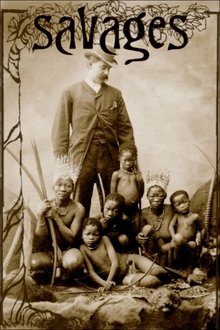
Savages: The Story of Human Zoos (2018)
For more than a century the great colonial powers put human beings, taken by force from their native lands, on show as entertainment, just like animals in zoos; a shameful, outrageous and savage treatment of people who were considered subhuman.
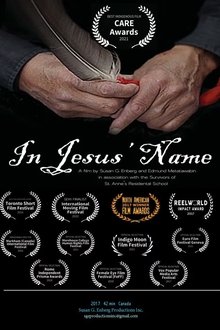
In Jesus’ Name: Shattering the Silence of St. Anne's Residential School (2017)
A poignant all-Indigenous English and Cree-English collaborative documentary that breaks long-held silences imposed upon indigenous children who were interned at the notoriously violent St. Anne’s Residential School in Fort Albany First Nation, Ontario. Use of a homemade electric chair at St. Anne's and the incorporation of testimony about student-on-student abuse makes this documentary stand apart from other films about Canadian residential school experiences. This film will serve as an Indigenous historical document wholly authored by Indigenous bodies and voices, those of the Survivors themselves.
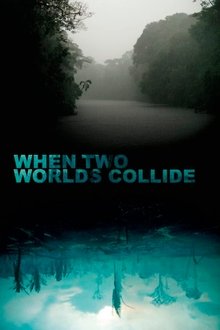
When Two Worlds Collide (2016)
In this tense and immersive tour de force, audiences are taken directly into the line of fire between powerful, opposing Peruvian leaders who will stop at nothing to keep their respective goals intact. On the one side is President Alan Garcia, who, eager to enter the world stage, begins aggressively extracting oil, minerals, and gas from untouched indigenous Amazonian land. He is quickly met with fierce opposition from indigenous leader Alberto Pizango, whose impassioned speeches against Garcia’s destructive actions prove a powerful rallying cry to throngs of his supporters. When Garcia continues to ignore their pleas, a tense war of words erupts into deadly violence.

The Chocolate Farmer (2011)
For ancient Mayans, cocoa was as good as gold. For subsistence farmer Eladio Pop, his cocoa crops are the only riches he has to support his wife and 15 children. As he wields his machete with ease, slicing a path to his cocoa trees, the small jungle plot he cultivates in southern Belize remains pristine and wild. His dreams for his children to inherit the land and the traditions of their Mayan ancestors present a familiar challenge. The kids feel their father's philosophies don't fit into a global economy, so they're charting their own course. Rohan Fernando's direction tenderly displays a generational shift, causalities of progress in modern times and a man valiantly protecting an endangered culture. Breathtaking vistas of lush rainforests contrast with the urban dystopia that pulled Pops children away from him. Will one child return to carry on a waning way of life
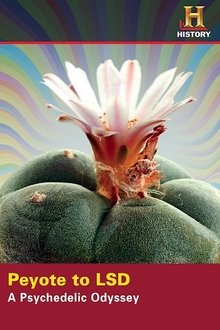
Peyote to LSD: A Psychedelic Odyssey (2008)
Plant Explorer Richard Evans Schultes was a real life Indiana Jones whose discoveries of hallucinogenic plants laid the foundation for the psychedelic sixties. Now in this two hour History Channel TV Special, his former student Wade Davis, follows in his footsteps to experience the discoveries that Schultes brought to the western world. Shot around the planet, from Canada to the Amazon, we experience rarely seen native hallucinogenic ceremonies and find out the true events leading up to the Psychedelic Sixties. Featuring author/adventurer Wade Davis ("Serpent and the Rainbow"), Dr. Andrew Weil, the Grateful Dead's Bob Weir and many others, this program tells the story of the discovery of peyote, magic mushrooms and beyond: one man's little known quest to classify the Plants of the Gods. Richard Evans Schultes revolutionized science and spawned another revolution he never imagined.
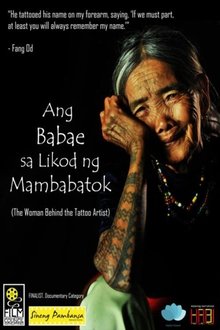
The Woman Behind the Tattoo Artist (2012)
Ang Babae sa Likod ng Mambabatok unravels the multiple layers of the almost mythological figure-living legend, Fang Od, a 92 year old woman who has been called the ‘Last [Traditional] Tattoo Artist of Kalinga.’ The first layer of the story is the one she is most famous for-being a tattoo artist. At her eyes, she continues to exhibit sharpness and precision in the very demanding art and skill of tattooing. The second layer shows her many stories as woman who has reached the age of looking back. She regales us with stories of her many suitors, of her youth, the dancing and the feasts. She also looks back with not just a tinge of regret that she never married nor had children of her own. Her body covered in tattoos is a landscape on its own mirroring the map of a woman who has chosen wittingly or unwittingly a road diverging from convention and in the process became a culture-bearer.

Learning To See (2016)
Struggling with a mid-life crisis, Robert Oelman leaves his psychology career in the early 1990s to photograph rare and exotic insects. After moving from the United States to Colombia, he forms a special bond with his subjects in the Amazon rainforest. This connection enables him to make striking photographic images of new and undocumented species. After more than 20 years of traveling, searching, and photographing, his quest culminates with a New York City gallery show where he finally shares his images with the public.
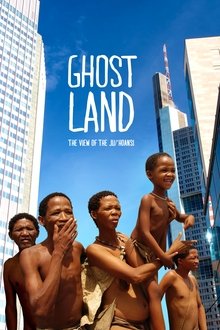
Ghostland: The View of the Ju'Hoansi (2017)
Remember the culture clash in THE GODS MUST BE CRAZY? This time it's real. One of the most ancient cultures on our planet is undergoing a major change. The Ju/Hoansi Bushmen in Namibia are not allowed to hunt anymore and need to converge with our so called “civilized” lifestyle. For the first time the Ju/Hoansi Bushmen travel through the Kalahari and then right into the heart of Europe. What starts as a look at their fascinating culture becomes an even more fascinating look at our Western lifestyle. A warm and humorous reflection of our habits through the eyes of people who are about to give up their million year old traditions.

Tower (2016)
Combining archival footage with rotoscopic animation, Tower reveals the action-packed untold stories of the witnesses, heroes and survivors of America’s first mass school shooting, when the worst in one man brought out the best in so many others.
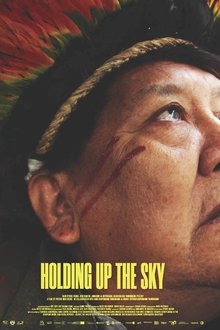
Holding Up The Sky (2023)
"When the shamans stop dancing and life in the rainforest loses its balance, the sky will collapse and come to crush everything." This wisdom is passed down from generation to generation by the Yanomami of Brazil. But gold miners are polluting the rivers, shamans are dying, the rainforest is disappearing and the earth is getting hotter. Davi Kopenawa, a tribal leader and spokesman for the Yanomami, has been fighting relentlessly against the colonization of his land for 40 years. He warns Westerners that when the sky collapses, they too will be crushed. Why don't they listen? Translated with www.DeepL.com/Translator (free version)

Pekka. Inside the Mind of a School Shooter (2015)
On November 7 2007, eighteen year old Pekka goes to school armed in Jokela, a quiet town North of Finland’s capital, Helsinki. On that tragic day, he kills eight people. The director reconstructs Pekka’s story through conversations with his parents, classmates and teachers. The oppressive circumstances that brought on the young man’s tragic action are slowly revealed clearer and clearer and the spectator realizes that these situations are not unique to Pekka from Jokela.
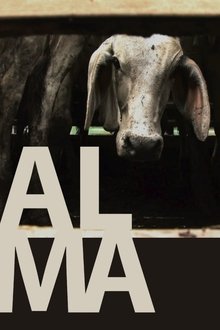
Alma (2011)
Beautifully shot, alternately joyful and horrifying, Alma captures the ecological, and even spiritual, cost of meat, dairy, and leather production in the Amazon.
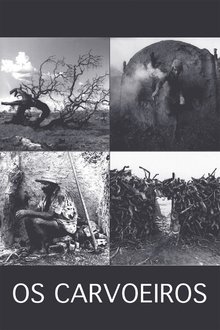
The Charcoal People (2000)
This deeply human documentary examines the subject of environmental destruction, highlighting the impoverished migrant workers who are chopping down the Amazon rainforest to create charcoal for pig iron production used primarily in the automobile industry. The film examines the children and elders and their daily lives and work as they burn timber in igloo-looking huts, their bodies charred gray for $2 a day, struggling to survive.
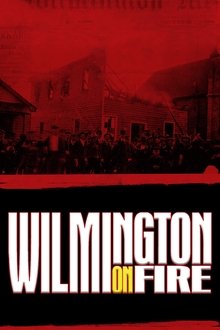
Wilmington on Fire (2015)
A historical and present day look at the Wilmington Massacre of 1898 and how the descendants of the victims of the event are asking for legal action in regards to compensation.

No Rastro do Eldorado (1925)
The film presents aspects of Rio Negro and Rio Branco, showing the services of Dr. H. Rice's expedition.
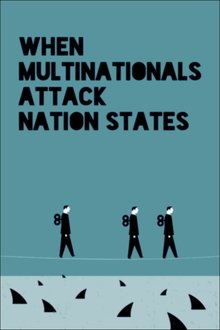
When Multinationals Attack Nation States (2016)
In autumn 2016, demonstrations sprang up all over Europe against the CETA free-trade agreement between the European Union and Canada. The reason? An obscure clause which allows multinationals to sue nation states if they feel their profits may be damaged by government decisions. An investigation into the hidden world of international arbitration.

Harvested Alive (2016)
As a doctor, Zhiyuan Wang spent 30 years studying how to save lives. He never imagined that he would spend another 10 years investigating how Chinese doctors take innocent lives. 95% of his evidence comes directly from China. His sources are Chinese doctors, judges, legislators, military officials, government officials, the media, and hospital websites. His research reveals an inconceivable truth – China’s hospitals, judiciary, and military worked together under the authority of the previous Chinese president Jiang Zemin to mercilessly slaughter a large number of Falun Gong practitioners through the harvesting of their organs. Today in a time of peace, it is difficult for people to believe that such a large-scale massacre has been silently taking place in China. But the truth shows that this frenzied killing machine, driven by huge profits, is still running rampant in society.
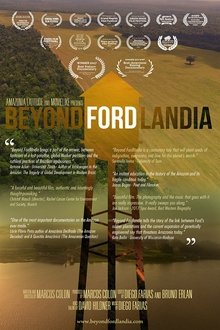
Beyond Fordlandia (2017)
An environmental account of Henry Ford’s Amazon experience decades after its failure. The story addressed by the film begins in 1927, when the Ford Motor Company attempted to establish rubber plantations on the Tapajós River, a primary tributary of the Amazon. This film addresses the recent transition from failed rubber to successful soybean cultivation for export, and its implication for land usage.

1932: Scars of Memory (2005)
January 22, 1932. An unprecedented peasant uprising erupts in western El Salvador, as a group of Latino and indigenous peasants cut army supply lines, attack a military garrison, and take control over several towns. Retribution is swift. After three days, the army and militias move in and, in some villages, slaughter all males over age 12. Elsewhere, they summarily execute anyone suspected of having a link to the Communists. Over the next few weeks, 10,000 people are massacred.

Ayahuasca (2016)
American tourists at SpiritQuest Sanctuary, a medicine lodge in Peru, share their thoughts about the traditional medicine ayahuasca, and their motivations for drinking it. Don Howard Lawler, founder of SpiritQuest, describes ayahuasca and its beneficial effects, as do the filmmakers themselves.